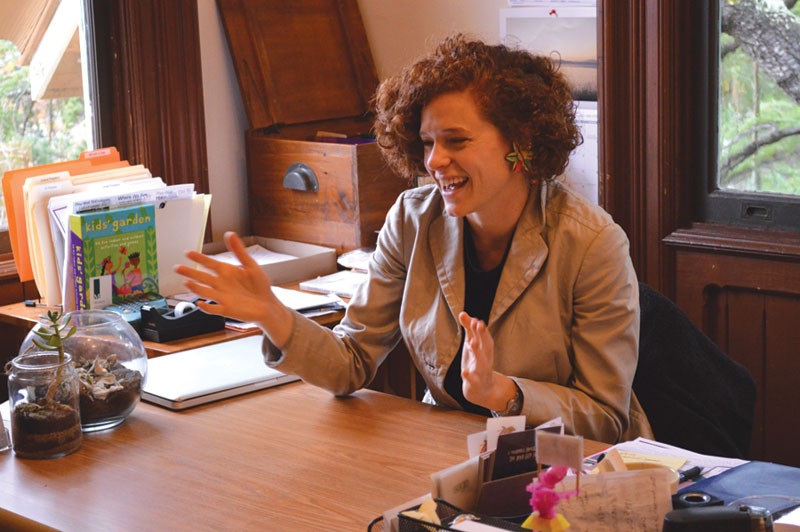Shelly Jackson is frustrated, and it’s messing with her sleep.
“I have so many things brewing, I couldn’t sleep last night,” the programs manager at the Marin History Museum says, leaning toward me over a wooden desk in her San Rafael office. “I have so many ideas, but I want to hatch them or launch them when I know there’s an audience.”
Jackson’s ideas include oral histories, pop-up exhibits, expert panels, bilingual events, hikes and a craft-beer festival—not your standard regional history fare. Central to the 28-year-old’s REM-stealing vision is audience engagement, particularly around current events that, she points out, will soon pass into the stuff of history.
“Gone are the days when visitors came to a museum, paid at the ticket counter, picked up an audio guide or brochure and were basically fed information,” she says, combing her fingers through several inches of curly red hair. “We want to know your personal story. We want to know why you came to Marin; we want to know why your grandmother came to Marin. We also want to know what you think about the death penalty not being repealed. We want to know if you have any questions about it from 50 or 60 years ago and how that legislation has changed through history.”
But Jackson and the staff of the MHM have run into a problem with their vision of community engagement. The community, it seems, doesn’t want to be engaged.
For example, in early October, she invited several ACLU veterans and authors to speak on the theme of individuals spurring change, from the Civil Rights era to the local Occupy movement. Four people came.
Visitors have repeatedly told her that they’re not comfortable with interactive spotlights on current Marin issues, be they racial profiling in the justice system, immigration or Occupy—”Which I did not realize was so ‘NO!’ here,” she says. But attendance at events that she describes as more “one-sided or didactic” has remained strong. In a flat voice, she twice remarks that the museum’s audience has seemed to love lectures on the Mt. Tam watershed.
Part of this could simply be a lack of public knowledge on the 77-year-old museum’s changing nature, director Michelle Kaufman points out. After all, the San Rafael site is currently housed in a tan-and-white Victorian on an isolated corner of B Street.
“People often see the exterior of this building and they think ‘Oh, it’s that little house and it has some dusty furniture in it,'” she says. “But then they come in and say, ‘Oh, you have all these programs.'”
But Jackson, who’s been with MHM for nine months and grew up in Florida, associates it with a blend of cultural discomfort unique to the affluent North Bay county.
“I knew there was a big socioeconomic, racial, regional gap in Marin, but I thought there was more of a collective ownership of that gap,” she says. “I thought there were more eyes on what we could do to make it smaller.”
Whatever the reason, the museum hopes to gather a larger audience when it opens another venue in early December in San Rafael’s Court Plaza. The branch will showcase a collection of local photos taken in Steep Ravine by Depression-era great Dorothea Lange for its first exhibit and will feature an opening holidary arts fair on Dec. 14.
Jackson leads me down the stairs from her office, through an exhibit called “Justice and Judgment” that, although more of your typical curated-objects setup, contains some arresting artifacts. On one wall, visitors can see San Quentin’s last, blood-splattered noose. On an iPad, scanned prison documents detail death row inmates’ final moments, including the exact length of time, down to the second, it took many of them to die.
She takes me to the new Court Plaze venue. Right now, it’s decorated only with a yellow carpet, a single desk and chair, and a handful of cardboard boxes. Jackson hurries around the fluorescent-lit space, showing me how exhibit walls will be arranged and where a screen will hang. She wants to host everything from academic lectures to dance troupes and live music in this still-to-be-defined space.
“In 2012, museums need to provide a forum or community hub, some kind of safe receptacle where visitors come to the museum and say, ‘Let me tell you what my story is and why it’s relevant,'” she’d told me earlier. In this empty space, I compliment her for trying to bring a vehicle of storytelling and discourse to Marin.
“Do you think we can do it?” she asks, her voice full of uncertainty, determination and hope.











